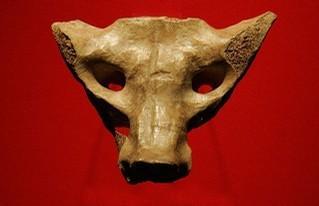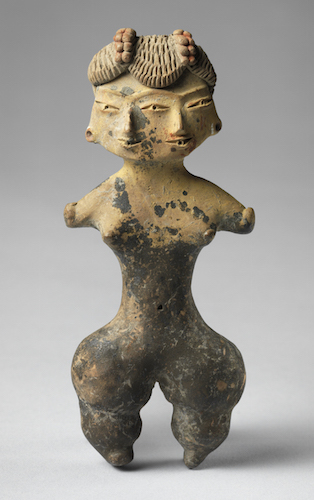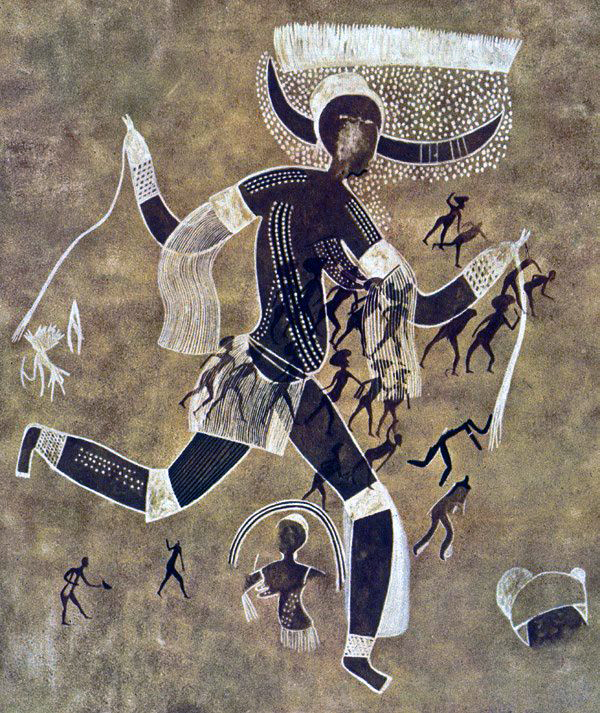Art History
AP Art History
Unit 1: Global Prehistory, 30,000–500 BCE
Global Prehistory
Paleolithic Era
Neolithic Era
Camelid Sacrum
Prehistoric Sculpture
Anthropomorphic Stele
Jade Cong
The Ambum Stone
Tlatilco Female Figurine
Terra Cotta fragment
Apollo 11 Stones
Great Hall of the Bulls
Running Horned Woman
Beaker with Ibex Motifs
Prehistoric Architecture
Stonehenge

an important Mesoamerican artifact that is shaped like a dog but represents the sacrum bone of a camelid. It was used in religious rituals and is believed to have had symbolic significance in the region's mythology.
A camelid sacrum in the shape of a canine
A type of ancient stone monument that features a human-like figure or figure. They were often used in funerary contexts and are found in various cultures around the world.
Anthropomorphic stele
Neolithic jade artifact. Hollow cylinder with circular perforations. Found in ancient Chinese tombs. Symbolic significance in Chinese culture. Believed to represent the universe and the cycle of life
Jade cong
Artifact discovered in Papua New Guinea, believed to be from 1500 BCE. Made of greywacke stone and depicts a human-like figure with a bird's head. Significance is unknown.
The Ambum Stone

Small clay figurine from the Tlatilco culture in Central Mexico, dating back to 1200-900 BCE. Depicts a female with exaggerated hips and breasts, often holding a child. Considered an important artifact for understanding gender roles and social organization in ancient Mesoamerica
Tlatilco female figurine
A small piece of fired clay that has broken off from a larger object. Often used in archaeological excavations to reconstruct ancient pottery and sculptures.
A small piece of fired clay that has broken off from a larger object. Often used in archaeological excavations to reconstruct ancient pottery and sculptures. Terra cotta fragment
A Paleolithic cave in Lascaux, France, known for its prehistoric wall paintings of bulls, horses, and other animals.
Apollo 11 stones
This prehistoric artwork is located in the Lascaux Caves of France. It features a collection of animal paintings, including bulls, horses, and deer.
Great Hall of the Bulls

A prehistoric rock painting found in Mexico depicting a woman with horns, running. It is believed to date back to around 6000 BCE and is one of the earliest known examples of art in the Americas. The significance of the horns is unknown, but it is speculated that they may represent a spiritual or supernatural aspect of the woman.
Running horned woman
It is a beaker that has ibex motifs on it. The ibex is a type of wild goat that was often depicted in ancient art. This beaker was likely used for drinking or storing liquids. It was made by skilled artisans in ancient times and is now a valuable artifact for archaeologists to study.
Beaker with ibex motifs
Megalithic monument in England, built around 2500 BCE. Consists of large standing stones arranged in circular and horseshoe shapes. The purpose and methods of construction remain a mystery.
Stonehenge